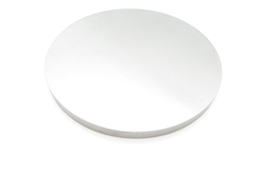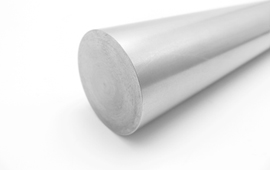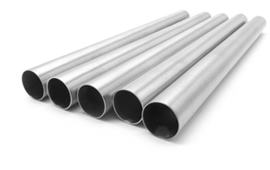Overview of Hafnium
The symbol for Hafnium is Hf. Both Hafnium and Zirconium are in the fifth cycle of the periodic table of elements. Hafnium is a silver-white metal the powder of which is black.
The chemical properties and some other properties of Hafnium and Zirconium are very approximate. Hafnium and Zirconium have very different nuclear performances. Their thermal neutron absorption cross-sections differ widely. The thermal neutron absorption cross section of natural Hafnium could reach 105x10-28 M2, which is more than 500 times of Zirconium.
Because of its outstanding nuclear performance, with good high temperature water corrosion resistance and mechanical properties, Hafnium is often used as a water-cooled reactor control material. Its disadvantage is that it is expensive. Considering the safety of nuclear power, Hafnium is almost irreplaceable as the control material of nuclear powered submarine. Therefore, Hafnium is a very important strategic material. Like Zirconium, Hafnium is also an important corrosion resistant material with good corrosion resistance to acid and alkali.
The chemical properties and some other properties of Hafnium and Zirconium are very approximate. Hafnium and Zirconium have very different nuclear performances. Their thermal neutron absorption cross-sections differ widely. The thermal neutron absorption cross section of natural Hafnium could reach 105x10-28 M2, which is more than 500 times of Zirconium.
Because of its outstanding nuclear performance, with good high temperature water corrosion resistance and mechanical properties, Hafnium is often used as a water-cooled reactor control material. Its disadvantage is that it is expensive. Considering the safety of nuclear power, Hafnium is almost irreplaceable as the control material of nuclear powered submarine. Therefore, Hafnium is a very important strategic material. Like Zirconium, Hafnium is also an important corrosion resistant material with good corrosion resistance to acid and alkali.
Properties of Hafnium
Hafnium's react to gas is similar to Zirconium. It has excellent corrosion resistance in high temperature air. And its reaction rate with oxygen and nitrogen is lower than that of Zirconium.
Reaction rate of Hafnium with air at temperature of 750 degree is the same as Zirconium. At 900 degrees it's react rate is half that of Zirconium. Therefore, the Hafnium metal can be hot processed at 900 degrees in the air.
Application of Hafnium and Hafnium alloys
Hafnium is used as a control material in nuclear reactors because it has a large thermal neutron absorption cross-section of 105x10-28 M2 square meters.
At present, almost all marine water - cooled reactors use atomic - grade pure Hafnium as control rods.
At present, almost all marine water - cooled reactors use atomic - grade pure Hafnium as control rods.
Hafnium is often used as an alloy additive. Adding a small amount of Hafnium can improve the strength and heat resistance of refractory metal alloys (such as Tantalum-Tungsten alloy, Niobium-Hafnium and Molybdenum alloy). .
Compared with other control materials, another prominent feature is that the thermal neutron absorption cross section of Hafnium does not decrease obviously after long-term irradiation.
In addition, Hafnium and its alloys such as Hf-Ta and Hf-Zr alloys are often used as structural materials for chemical plant in the reprocessing of spent fuel due to their good corrosion resistance to nitric acid.

Our Hafnium products
We have Hafnium Sheet, Hafnium Rod, Hafnium Tube and other Hafnium products, our products all follow ASTM standard such as ASTM B737, ASTM B776.





